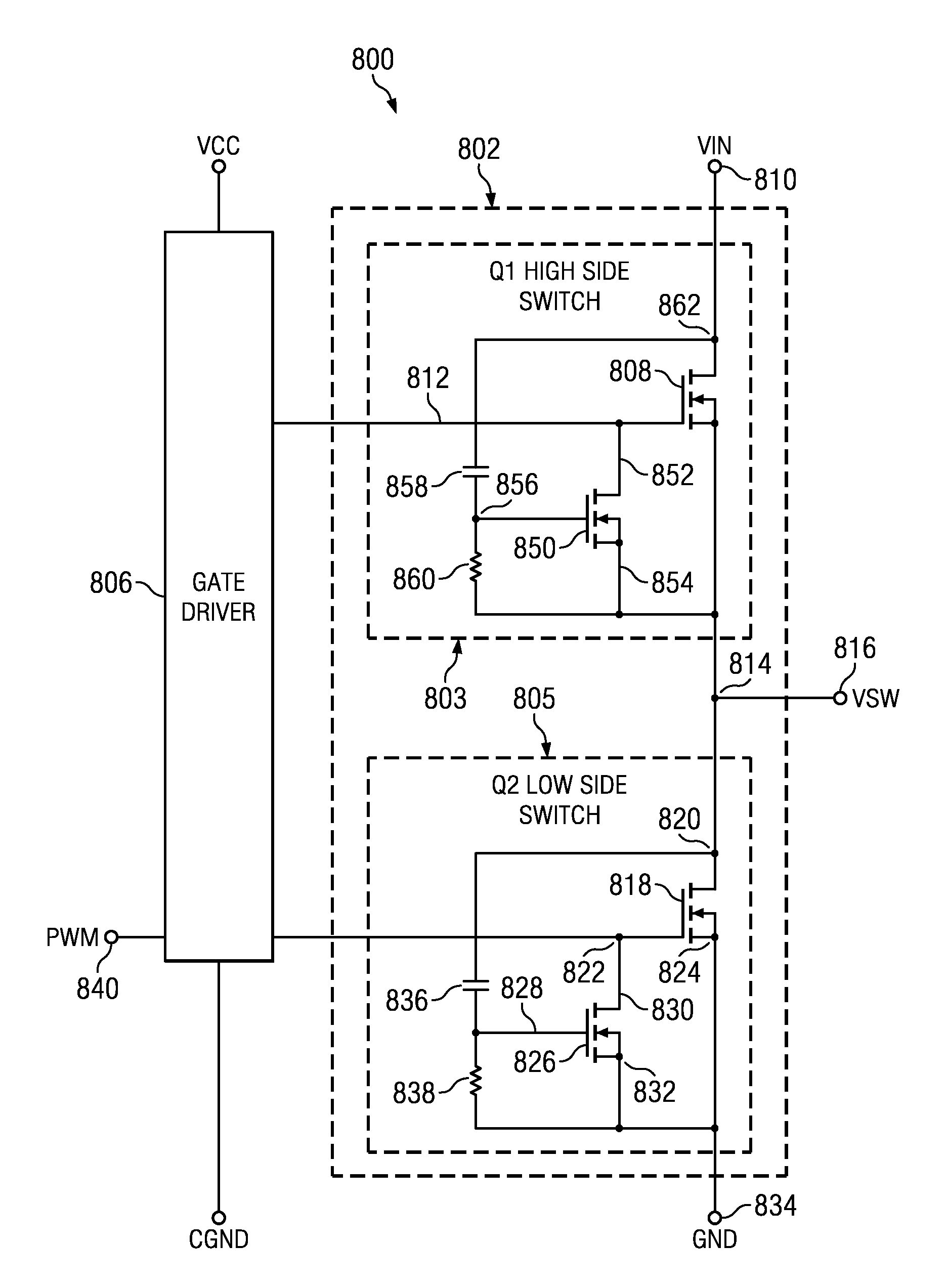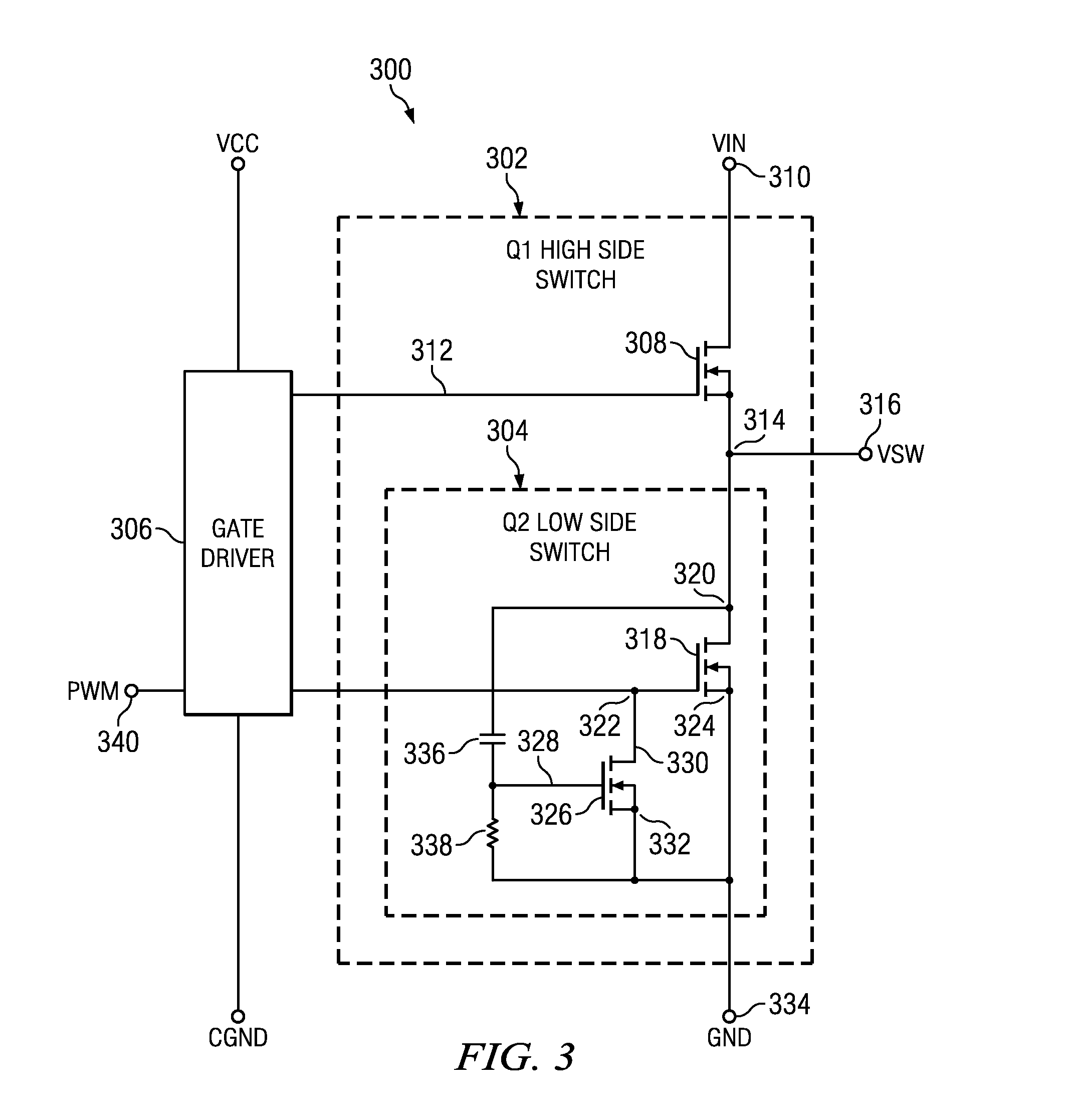Mosfet with gate pull-down
a mosfet and gate pull-down technology, applied in the field of mosfet, can solve the problems of limited by the switching losses of the power switch, the switching loss, and the impairment of the system reliability, and achieve the effect of reducing or preventing the conductance of the low-side mosfet switch during turn-off and reducing the switching loss
- Summary
- Abstract
- Description
- Claims
- Application Information
AI Technical Summary
Benefits of technology
Problems solved by technology
Method used
Image
Examples
Embodiment Construction
An embodiment of the present invention is shown in FIG. 1, generally as 100. Although this embodiment as shown and discussed is for a low-side switch for a synchronous buck converter, the invention is not so limited, and an embodiment in which the invention is utilized in both the low-side and high-side switches will be discussed later in connection with FIG. 8. As easily recognized by people skilled in the art, the embodiment shown in FIG. 1, can be implemented at any switching power MOSFET, and especially can be implemented at MOSFETs used in push-pull configuration in any switched DC / DC converter topology. Also, the solution using a capacitive coupling to turn-on the pull-down transistor can be implemented in lateral power MOSFETs used in IC's designed for power management applications.
As shown in FIG. 1, the main FET, which as shown, is a NMOS transistor, has a drain 104, a source 106 and a gate 108. A second FET, the pull-down FET 110, is connected so that its drain is connecte...
PUM
 Login to View More
Login to View More Abstract
Description
Claims
Application Information
 Login to View More
Login to View More - R&D
- Intellectual Property
- Life Sciences
- Materials
- Tech Scout
- Unparalleled Data Quality
- Higher Quality Content
- 60% Fewer Hallucinations
Browse by: Latest US Patents, China's latest patents, Technical Efficacy Thesaurus, Application Domain, Technology Topic, Popular Technical Reports.
© 2025 PatSnap. All rights reserved.Legal|Privacy policy|Modern Slavery Act Transparency Statement|Sitemap|About US| Contact US: help@patsnap.com



